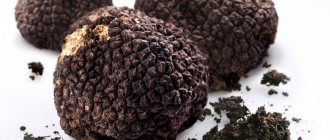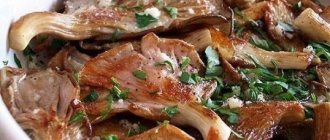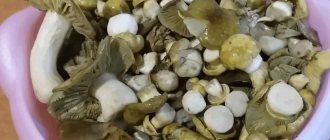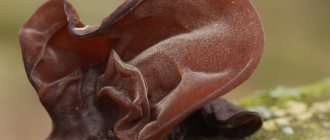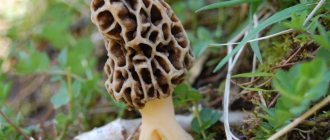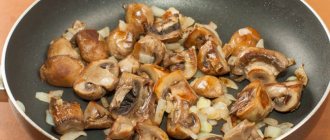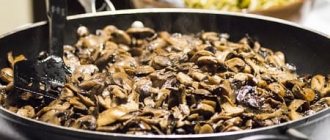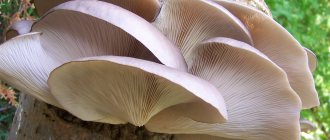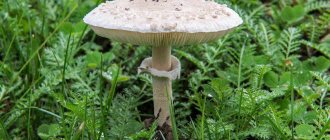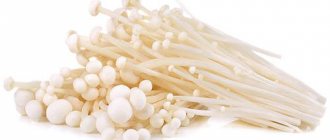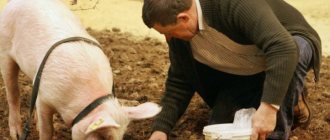What is a truffle
Truffle (Tuber) is a genus of ascomycetes or marsupial fungi from the Truffleaceae family. The fruiting bodies of these representatives of the fungal kingdom develop underground and in their appearance resemble small fleshy tubers. Among the variety of varieties there are edible ones, some of them are highly valued for their taste and are considered a delicacy.
“Truffles” are also called mushrooms that do not belong to the genus Tuber, for example, rhizopogon vulgaris.
They are similar in shape and growth characteristics
Sometimes such ordinary truffles are sold as real ones.
Description of the mushroom
The black truffle is sometimes called black gold, prince, diamond. There are more than 30 species of them in nature, but only 8 are eaten.
Depending on the type of black truffle, the characteristics change, but in general the mushroom has the following characteristics:
- body shape - disproportionate, with edges from 4 to 6 pieces;
- tuber diameter - from 3 to 20 cm (average - 6–8 cm);
- weight – 200–600 g (main mass – 400–450 g);
- peculiarity - there are no legs and caps, like the usual mushrooms (in appearance it is similar to a potato, stone, tuber);
- surface - rough and wrinkled (like warts);
- the structure of the pulp is marbled, as it consists of a huge number of veins of different light shades, the main tone is dark;
- spores are oval or spindle-shaped in shape, microscopic in size, dark brown in color;
- The taste is pleasant and pronounced.
The black truffle is often compared to the white variety of the truffle family, but they are different mushrooms.
Differences:
- different shape and color - white on the outside can be brown, but the inside is always light, and the shape resembles Jerusalem artichoke;
- place of distribution - black truffle is considered French, white - Italian;
- the light brother has a richer aroma and taste;
- black mushroom is more affordable (25-50 euros per dish in a restaurant with a delicacy), white representatives are rare and expensive - in a restaurant you will have to pay at least 200-300 euros.
Feature of black truffle: as the plant develops, the color of the surface of the mushroom changes. Initially it is dark brown, and when it grows to full age it becomes black-charcoal. At the same time, if you press on the body, the top layer acquires an orange-rusty color.
Why is truffle mushroom so expensive?
Truffle is the most expensive mushroom in the world. Its cost is due to its rarity and specific taste, which has been appreciated by gourmets for many centuries in a row. The leader in price is the white truffle from the Piedmontese city of Alba in the province of Cuneo. The World Auction of White Truffles is held annually in this locality, which attracts connoisseurs of these mushrooms from all over the planet. To estimate the price order, it is enough to give a few examples:
- in 2010, 13 mushrooms went under the hammer for a record amount of 307,200 €;
- a gourmet from Hong Kong paid 105,000 € for a single copy;
- The most expensive was a mushroom weighing 750 g, sold for $209,000.
Truffle sold at auction in Alba
The high cost can be explained by the fact that every year the number of mushrooms is steadily decreasing. In the regions where it grows, a decline in agriculture is observed; many oak groves where the fungus lives are abandoned. However, farmers are in no hurry to increase the area of their mushroom plantations, fearing a decline in prices for the delicacy. In this case, landowners will need to cultivate larger areas to get the same profit.
Comment! In 2003, ¾ of the mycelium of wild truffles in France died due to severe drought.
Contraindications and rules for choosing truffles
The use of truffles is contraindicated only for those who have an individual intolerance to these mushrooms. In addition, these mushrooms cannot, or at least are not advisable for, those who have severe digestive tract problems. It may well be that the stomach simply cannot cope with these mushrooms. Additionally, you should only buy mushrooms from places you trust, including large restaurants. Mid-level establishments very often offer fakes rather than real truffles, which can result in serious poisoning.
Also, special attention should be paid to the quality of mushrooms, because occasionally they are grown in conditions where the soil can accumulate toxins or other harmful substances. Considering that mushrooms very easily absorb all substances, this can have a very bad effect on the health of a gourmet.
No matter how much you love truffles, remember that they are quite expensive, and too low a price from an unverified supplier should alert you.
What types of truffles are there?
Not all types of truffles are valuable in cooking - mushrooms differ both in taste and in intensity of aroma. The most in demand are Piedmontese white truffles (Tuber magnatum), which are found in nature less frequently than others and bear fruit only from October until the onset of winter cold. The growing area covers the north-west of Italy, especially the Piedmont region and adjacent areas of France. The Italian or true white truffle, as this variety is also called, is also found in other countries of Southern Europe, but much less frequently.
The fruiting body of the fungus develops underground and consists of irregularly shaped tubers from 2 to 12 cm in diameter. Large specimens can weigh 0.3-1 kg or more. The surface is velvety and pleasant to the touch, the color of the shell varies from light ocher to brownish. The flesh of the mushroom has a dense structure, yellowish or light gray, in some cases reddish with an intricate brown-cream pattern. In the cross-sectional photo of a truffle mushroom, it is clearly visible.
Piedmontese white truffle - the most expensive mushroom in the world
Second in the popularity ranking is the black French truffle (Tuber melanosporum), otherwise it is called Périgord after the name of the historical region of Périgord, in which it is most often found. The mushroom is distributed throughout France, central Italy and Spain. The collection season is from November to March, with the peak occurring after the New Year.
Comment! To find black truffles, which sometimes lie at a depth of 50 cm, they focus on swarming red flies that lay eggs in the ground next to the mushrooms.
The underground tuber usually does not exceed 3-9 cm in diameter. Its shape can be either round or irregular. The shell of young fruiting bodies is red-brown, but as it matures it becomes jet black. The surface of the mushroom is uneven with numerous faceted tubercles.
The flesh is firm, grayish or pinkish-brown. Like the previous variety, on the cut you can see a marble pattern in a reddish-white color scheme. With age, the flesh becomes thick brown or purple-black, but the veins do not disappear. The Perigord species has a pronounced aroma and a pleasant bitter taste.
Black truffle is successfully cultivated in China
Another variety of valuable mushrooms is the black winter truffle (Tuber brumale). It is common in Italy, France, Switzerland and Ukraine. It got its name from the time of ripening of the fruiting bodies, which occurs in November-March.
The shape is irregular spherical or almost round. The size can reach 20 cm in diameter with a weight of 1-1.5 kg. Young mushrooms are red-violet, mature specimens are almost black. The shell (peridium) is strewn with small warts in the form of polygons.
The flesh is whitish at first, then darkens and becomes gray or ash-violet, mottled with numerous white or yellowish-brown veins. The gastronomic value is lower than that of white truffle, the taste of which is considered by gourmets to be more pronounced and rich. The aroma is strong and pleasant, reminiscent of musk to some.
Winter black truffle is listed in the Red Book of Ukraine
Only one type of truffle grows in Russia - summer or black Russian (Tuber aestivum). It is also common in Central European countries. The underground body of the fungus has a tuberous or round shape, a diameter of 2.5-10 cm. The surface is covered with pyramidal warts. The color of the mushroom ranges from brownish to blue-black.
The pulp of young fruiting bodies is quite dense, but over time it becomes loose. As it grows, its color changes from whitish to yellow or gray-brown. The cut shows a marble pattern of light veins. The photo of the summer truffle matches the description of the mushroom and more clearly demonstrates its appearance.
The Russian species is collected in summer and early autumn
The summer variety has a sweetish, nutty taste. Quite a strong but pleasant smell, somewhat reminiscent of algae.
What is their feature?
Truffles are an underground tuberous body that belongs to the genus of marsupial fungi. They grow in small groups of 3-7 fruits and are characterized by the presence of a fleshy structure and unsightly appearance, which hides exclusive taste. There is an opinion that once you taste a truffle, its aroma will be etched in your memory for the rest of your life.
Where do they grow?
The delicacy first became known in Egypt and Ancient Rome. In the 16th century, it was brought to France, where to this day it is in unprecedented demand. Mushrooms are grown in coniferous and deciduous forests:
- Europe;
- North America;
- Asia;
- North Africa.
White truffles from the Italian city of Alba in Piedmont are considered the best. They are collected from October to December, which is why the region at this time becomes a tourist center that true gourmets can visit.
What does it taste like?
The mushroom has a distinct flavor that can be compared to roasted sunflower seeds and walnuts. To maximize the preservation of taste, they prefer to consume the delicacy raw or by reducing the process of heat treatment of the product to a minimum. Many people who have tasted it note that the fruit body has a strong odor, reminiscent of the aroma of algae.
Truffles are collected at night, this is explained by the enhancement of its aromatic properties in cool air. To hunt for them, pigs are used, which are able to easily detect the elite smell of mushrooms.
MushMagic
What types are there?
There are two common varieties:
- black truffle (Tuber Melanosporum);
- white truffle (Tuber Magnatum).
Compared to other mushrooms, this delicacy requires special growing conditions - a subtropical climate with abundant rainfall. It feels comfortable in mixed forests where beeches and oaks grow that are more than 15 years old. The soil for cultivation should be soft and rich in minerals.
White truffle
How is truffle obtained?
In France, they learned to look for wild delicious mushrooms back in the 15th century, resorting to the help of pigs and dogs. These animals have such a good sense of smell that they can smell prey 20 meters away. Observant Europeans quickly realized that truffles invariably grow in places where flies of the spinyfly family swarm, the larvae of which like to settle in mushrooms.
In 1808, Joseph Talon collected acorns from oak trees, under which truffles were found, and planted an entire plantation. A few years later, under young trees, he collected the first harvest of valuable mushrooms, proving that they can be cultivated. In 1847, Auguste Rousseau repeated his experience, sowing acorns on an area of 7 hectares.
Comment! A truffle plantation produces good yields for 25-30 years, after which the intensity of fruiting drops sharply.
Today, the largest supplier of “cooking diamonds” is China. Mushrooms grown in the Middle Kingdom are much cheaper, but are inferior in taste to their Italian and French counterparts. Countries such as:
- USA;
- New Zealand;
- Australia;
- Great Britain;
- Sweden;
- Spain.
Where and when can you meet
Truffles grow in deciduous forests on calcareous soils, preferring a warm climate, free from frost and summer winds, and are found in Europe and Asia . Each type of tree affects the appearance and taste of the mushrooms, which grow for 6–8 months, and except for the summer black species, begin to appear in the fall and disappear in mid-winter. Top quality products are supplied mainly from France, Spain and Italy. Secondary markets include China, Turkey, Croatia, Slovenia, North Africa, the Middle East and the USA.
The black variety or perigord, the second most commercially profitable species, is named after the region of the same name in France. It forms mycorrhiza with deciduous trees - oak, hazelnut, hornbeam, beech, pine, linden, aspen, chestnut, poplar. Fruiting occurs from December to the end of March. The main French truffle sites are in the south in Périgord, Provence, the Alps, and the Côte d'Azur, although the mushrooms are found throughout most of France.
The Périgord region is the most famous source of truffles, and all French specimens are called Périgord, even if they originate from another region. This mushroom is still considered a national treasure of France, and residents of the country call this special delicacy “black diamond.”
The summer or burgundy and burgundy mushroom is found throughout much of Europe. They have aromatic pulp of a darker color and are associated with the root cells of various tree species and shrubs - birch, poplar, elm, linden, rowan, willow, hawthorn, hazel. The season of the summer species lasts from May to August, and the Burgundy species is harvested from September to November.
White truffle is the highest quality type. The Italians call it the “white Madonna truffle.” It is found mainly in the Italian regions of Langhe, Montferrat, Molise, in the Piedmont region of northern Italy in the countryside around the cities of Alba and Asti. The season for fresh white truffles is usually from October to the end of December.
The whitish truffle is found in other rural areas of Italy - Tuscany, Abruzzo, Romagna, Umbria, Lazio, Marche and Molise. It is not as aromatic as from Piedmont, although it is close to it in taste characteristics. Several types of mushrooms grow on the northwest coast of the United States - Oregon black, brown, spring and winter white. However, not only in Europe, but also in the southern hemisphere, in New Zealand and Australia, this amazing delicacy grows, the first copy of which was obtained in 1993.
On the territory of Russia, this valuable mushroom is extremely rare, but the lands of the Central European strip, the Black Sea coast of the Caucasus, the Middle Volga region, and the Southern Urals have suitable conditions for its growth. Unfortunately, hidden development does not make it possible to establish the distribution areas of this culture, and only pinpoint detection sites are included in the statistics. Sometimes you can independently detect truffles under rotten leaves - midges hover over them.
Did you know? For the first time, statements about truffles appeared in Sumerian writings in the 2nd century BC. e. These mysterious and mythical mushrooms were considered to be the result of lightning, heat and moisture in the earth (Plutarch), tuberous roots (Cicero) and children of the earth (Dioscorides).
What does truffle taste like?
The truffle taste is mushroom with a subtle hint of roasted walnuts. Some gourmets compare it to sunflower seeds. If the fruiting bodies are kept in water, it acquires a taste reminiscent of soy sauce.
The taste perception of different people differs, but most of those who have tried this delicacy note that the taste, although unusual, is very pleasant. It's all about androstenol contained in the pulp - an aromatic component responsible for the specific smell of these mushrooms. It is this chemical compound that causes increased sexual desire in wild boars, which is why they seek them out with such enthusiasm.
Comment! In Italy, collecting truffles with their help is prohibited.
Silent hunting with a pig
Ecology and distribution
Black truffle grows almost all over the world, since they learned to grow it artificially. It is always found in the wild in France (Périgord, Dordogne, Gironde, Lot, Vaucluse). Many from Italy, Spain, Belarus, Romania.
There are relatively few of them in China. Most often this is artificial cultivation (Chinese truffles are considered the most inexpensive).
Ecologists claim that the fungus has a destructive effect on nature, since in places with mycelium the extinction of all vegetation is noted. This is the main sign for detecting a black truffle.
There are other factors that indicate the presence of a valuable product:
- Areas dug up by wild boars. Mushrooms emit a specific smell. Wild boars look for them, digging the soil with their noses. They do not eat all the mushrooms from the pits, but they contribute to the spread of spores.
- Cluster of insects. Red flies flock to the smell in the holes made by animals. They lay their larvae in micelles, which attracts other insects.
Mostly amateur mushroom pickers pay attention to such signs. Those who search professionally (as a business) use other methods. The position of experts is based on the exclusion of a decrease in the quality of truffles (after being dug up by wild boars / accumulation of flies (and their larvae in the spores), the product is not suitable for sale).
To collect mushrooms without damage or other defects, “hunters” use assistants:
- Pigs. They are able to “hear” the truffle aroma 25 meters away and find delicious food in a matter of minutes. But there is a drawback - excessive love for truffles drives animals crazy. Sometimes the pigs cannot be stopped (they just eat and trample everything).
- Dogs. Four-legged friends will not gnaw or trample mushrooms. Training dogs begins from birth, the process takes a long time (the puppy is given milk with black truffle so that he gets used to the smell and loves it). The cost of such bloodhounds is very high.
Most often, businessmen use the second method - despite the “exorbitant” price, the costs quickly pay off.
How to eat truffle
Truffles are consumed fresh as an addition to the main dish. The weight of the valuable mushroom per serving does not exceed 8 g. The tuber is grated into thin slices and seasoned:
- lobsters;
- poultry meat;
- potato;
- cheese;
- eggs;
- rice;
- Champignon;
- vegetable stew;
- fruits.
In the national cuisine of France and Italy there are many dishes with a truffle component. Mushrooms are served with foie gras, pastas, omelettes, and seafood. Red and white wines highlight the delicate taste of the delicacy well.
Sometimes mushrooms are baked and also added to various sauces, creams, and butter. Due to their short shelf life, fresh mushrooms can only be enjoyed during the fruiting period. Grocery stores buy them in small quantities of 100 g and deliver them to the point of sale in special containers.
Warning! People allergic to penicillin should use gourmet mushrooms with caution.
Application in cosmetology and medicine
Due to the black truffle containing a large number of nutrients that have a healing and restorative effect, the mushroom is actively used in medicine and cosmetology. It is included in some drugs aimed at:
- to get rid of gout and joint pain;
- to restore male potency;
- to strengthen the female reproductive system (against infertility);
- to improve visual acuity.
Manufacturers of cosmetic products produce moisturizing and anti-aging (anti-wrinkle) creams, serums, and oils. Shampoos and conditioners are made from black truffles and added to perfumes.
Interesting facts about truffles
Contrary to popular belief, underground mushrooms are best found by specially trained dogs. Breed and size do not matter, the whole trick is in training. However, among all four-legged animals, the Lagotto Romagnolo or Italian water dog breed is distinguished. They have an excellent sense of smell and love for digging in the ground by nature itself. You can also use pigs, however, they do not shine with hard work and will not search for a long time. In addition, you need to make sure that the animal does not eat the valuable mushroom.
Training dogs can take several years, so good truffle hunters are worth their weight in gold (the cost of a dog reaches 10,000 €).
The Romans considered truffles a powerful aphrodisiac. Among the fans of this mushroom there are many famous personalities, both historical and modern. Alexandre Dumas, for example, wrote the following words about them: “They can make a woman more affectionate and a man more ardent.”
Truffle slices are sprinkled on the dish immediately before serving.
Some more amazing facts about gourmet mushrooms:
- unlike other forest fruits, truffle pulp is more easily absorbed by the human body;
- the product contains the psychotropic substance anandamide, which has an effect similar to marijuana;
- in Italy there is a cosmetics company that produces products based on truffles (mushroom extract smooths out wrinkles, makes the skin elastic and smooth);
- the largest white truffle was found in Italy, it weighed 2.5 kg;
- The most intense aroma is emitted by fully ripe mushrooms;
- the larger the fruit body in size, the higher the price per 100 g;
- In Italy, you need a license to look for truffles in the forest.
Beneficial features
At the same time, truffles are not only tasty, but also healthy, as they contain a large amount of vitamins that are necessary for the body of any person. These mushrooms also contain antioxidants that help support immunity. Scientists have already proven that mushrooms contain some pheromones that increase a person’s sensuality and emotionality. It is for this reason that they have long been considered a powerful aphrodisiac.
In some regions of the East, the juice obtained from these rare mushrooms is used to treat the eyes.
In Italy, well-known cosmetic companies use extracts from these mushrooms, adding them little by little to their products.
It is believed that such cosmetic preparations can fight aging, help fight pigment spots and smooth the skin. Chemical composition of truffles (per 100 g)
| Calorie content | 24 kcal |
| Ash | 1 g |
| Saccharides | 1 g |
| Water | 90 g |
| Alimentary fiber | 1 g |
| Carbohydrates | 2 g |
| Fats | 0.5 g |
| Squirrels | 3 g |
| Vitamins | |
| Vitamin PP | 9.5 g |
| Vitamin C | 6 g |
| Vitamin B2 | 0.4 mg |
| Vitamin B1 | 0.02 mg |
Mycorrhiza planting technologies
The optimal planting time is from the beginning of May to the end of August, when the warm weather outside stabilizes. The air temperature during the planting and growing season is from +22 to +25°C. Depending on the place where mycorrhiza will be grown, special conditions must be created.
To the greenhouse
Since truffles are grown at home throughout the year, build a greenhouse from polycarbonate and equip it with a heating and ventilation system. Please also take into account the following features:
- prevent the penetration of sunlight - it will destroy the mycelium (make a canopy over the greenhouse, hang curtains or simply cover it with a dark cloth);
- avoid drafts, especially in winter - seal all cracks;
- The minimum temperature in the room at night is + 15°C.
In open ground
Black truffles are grown in the garden in the southern regions (in cold climates the mushrooms die). In this case, it is important to plant trees if there are none. The scheme is 4 x 5 m (about 500 seedlings per 1 hectare). Peculiarities:
- monitor the soil moisture - it should be 70–75% (in open areas it is impossible to control this process; after watering the trees, make a layer of mulch up to 5 cm);
- seedling planting depth - at least 70–80 cm;
- every 2 months, fertilize the soil with rotted manure, especially in the root zone of the partner (seedling) - the tree absorbs useful substances and then transfers them to the fungi;
- clear the place where the mycelium will be laid of debris and grass.
Into the basement
When growing black truffle in the cellar, strictly ensure that pests do not penetrate inside. Periodically disinfect all components of the basement.
Peculiarities:
- Whitewash the walls and ceilings with lime;
- Initially divide the room into 2 parts - in one the mycelium will be cultivated, in the second - truffles will be grown;
- to use maximum space, install shelving up to the ceiling, but not from wood, but from metal-plastic (it will not rot);
- before sowing, fumigate the basement with sulfur, and then ventilate;
- make ventilation;
- Hang a small mosquito net over all the cracks and openings that you cannot do without, which will prevent the penetration of pests.
Additionally, you will need fluorescent lamps, thermometers, hydrometers, heating and water pipes for irrigation. Don’t forget to make boxes on the shelves where the soil mixture will be poured and spores will be planted.
Step-by-step landing instructions
The technology for planting mycelium is almost the same for all places. For the greenhouse and basement:
- First fill the artificial beds with sawdust, then with a mixture of soil, leaves and sand.
- Take the mycelium and mix it in equal proportions with the soil mixture.
- Scatter over the surface of the “vegetable garden”.
- Sprinkle a small layer of sawdust on top.
How to plant mycelium in open ground:
- Dig holes with a depth of 20 to 60 cm (these parameters are indicated on the packaging with planting material for a particular species). Scheme - 2 x 2 m.
- Moisten and allow moisture to be absorbed.
- Lay out the seeds, sprinkle with soil and sawdust on top.
- Be sure to keep it under plastic wrap for the first month to create a normal level of humidity.
Another option (simplified) is to make holes around each trunk at a distance of 10–15 cm from the tree and between each other. This is how it is usually planted in wooded areas.
To see how Russians plant mycelium in their garden plots, watch the video:
Growing truffles at home
Truffles are long and expensive to grow
Growing truffles at home is a lucrative business, but it requires a lot of investment and an appropriate level of patience. Harvests begin to be obtained only 5-10 years after the establishment of the grove. Cultivation first began in France in the first half of the 19th century. By the end of the century, thousands of hectares were planted in this country with oak groves containing truffles. France annually supplied about 1000 tons of mushrooms to world markets.
During the First World War, most of the forests were destroyed because... There were intense battles in those places. The poor environmental situation also seriously affects productivity. Currently, only 50 tons of truffles are grown in France per year.
Australian, Chinese, Japanese, and American farmers have learned to cultivate this tasty and original mushroom.
However, you should not expect that artificial cultivation of truffles will bring the main income to the owner of the grove. Productivity is unstable, the first fruiting bodies have to wait about 5 years, the main products are obtained between 10 and 20 years of cultivation. Then its quantity gradually begins to fall.
Growing technology
Australian cultivation technology is considered the most productive. Already a year after planting, the first fruits are harvested, and after 5 years they receive up to 20 kg of produce per hectare. Primary requirements:
- The climate should be moderate and humid.
- Soil pH - 7.4-7.9.
- The roots of oak or hazel are suitable for infection with mycelium.
The soil should be dug well; it should contain useful minerals. The soil is fertilized 6-8 months before planting. Carefully remove all weeds (down to the last root). Herbicides and pest control agents are not applied: they will damage the mycelium. The only suitable drug is ammonium glufosinate (a contact non-selective herbicide).
To grow truffles yourself, small tree seedlings are infected with mycelium. First, they are kept in quarantine under sterile conditions for several weeks. Immediately after applying the truffle mycelium, the seedlings are planted in a nursery or greenhouse. They are transferred to open ground after a couple of months, when the height of the tree reaches at least 20 cm. A good time for planting is spring, when there is no threat of frost on the ground surface.
Planting depth is 75 cm. The area for one tree is 4x5 m. It is possible to grow up to 500 seedlings per hectare. Around the tree, mulch from fallen leaves and forest litter is laid out in a circle (diameter - 40 cm). The main benefit of mulch is the creation of optimal conditions for the growth of mycelium. Attention! A truffle farm should not be adjacent to willows, poplars, chestnuts, and fir trees.
Truffle mushroom is capricious, so growing it requires patience. It is necessary to constantly check the composition and acidity of the soil to prevent the appearance of weeds. The plantation is fenced to keep small rodents and other animals out. The most realistic way is to grow black truffles.
Pests and protection
The main enemies of truffles are weevils and cockroaches. For prevention, wildflowers and similar crops should not be planted nearby; cracks in the basement must be sealed. There are 2 ways to fight:
- chemicals (their range is huge), but in this case harmful substances will get into the soil;
- folk remedies - mix boric acid with honey, roll into balls and place in the mycelium.
The latter option does not harm mushrooms and is considered universal against cockroaches and weevils.
Harvesting and processing
The first harvest after laying the mycelium will appear exactly a year later, but it will be meager. But after 3-4 years, the black truffle will delight you with full germination - from 80-100 sq. m remove from 9 to 15 kg.
Harvest only fully ripened fruits. To determine maturity, look at the ground in the growing area - midges circle over a ripe mushroom (in an open place), the soil rises, and the grass dries out.
How to assemble correctly:
- Use a spatula to dig up the soil near the mushroom.
- Lift it and, holding the truffle with one hand, cut it with a knife with the other so that the root remains in the ground.
Mushrooms intended for sale and long-term storage at home are prohibited from washing. It is enough to wipe them with a soft cloth, but it is better to brush off the dirt with a soft brush.
